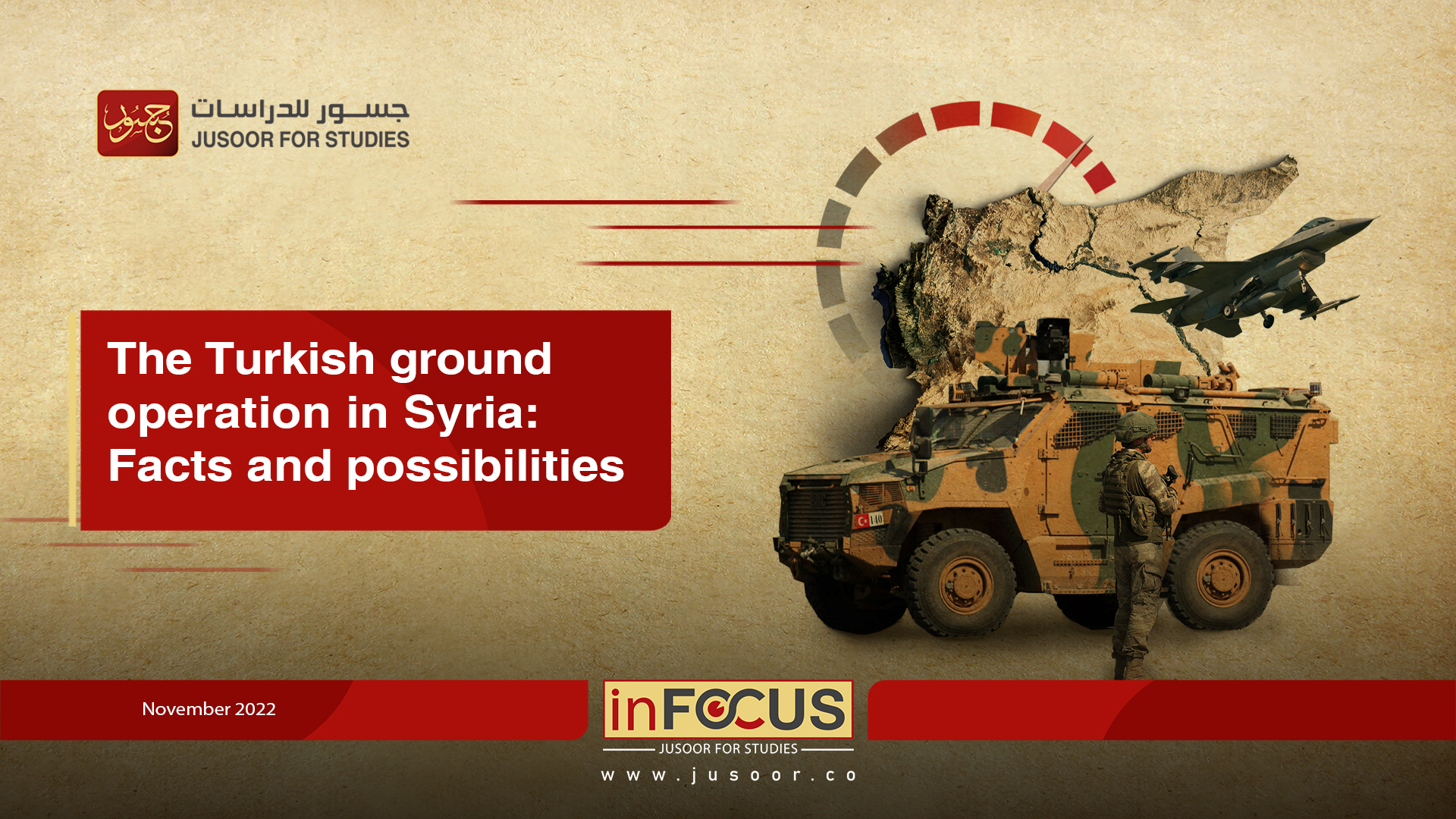The Turkish ground operation in Syria: Facts and possibilities
On November 19, 2022, Türkiye launched the "claw-sword" operation in northern Syria against the positions of the Kurdistan Workers' Party (PKK) and the Syrian Democratic Forces (SDF). However, the operation has been limited to air and artillery strikes without any ground action.
The possibility and prospect of developing the Turkish operation from air to ground one is linked to several military indicators: readiness, preparations, safety measures, and de-confliction with foreign forces in addition to carpet bombings.
It seems that the state of readiness has not yet reached its maximum; where the Turkish forces have just informed the opposition factions to prepare lists of fighters to carry out combat missions, without issuing orders to deploy forces on the fighting axes.
Moreover, the measures of safety and deconfliction with foreign forces taken by the Turkish forces has not reached a level that makes the Russian and American troops completely evacuate their own military sites. These foreign forces have rather momentarily moved away from the areas of operations. Ankara has achieved an unprecedented breakthrough; as coordination with the United States contributed to the use of Turkish aircraft in the Syrian airspace to bomb SDF sites in Deir ez-Zor.
On the other hand, the Turkish army has completed the recruitment of manpower within its forces deployed on the borders and inside Syria. when the Turkish military high command gave orders to the forces on November 21, to stop giving personnel and officers any leave or absence, and to summoned those who were on leave to rejoin their military units. Furthermore, the operations rooms of the Turkish ground troops seem to be ready to carry out the mission.
Based on the aforementioned review of military indicators, launching a ground operation seems to require further procedures, that can be taken easily and quickly. However, the absence of such measures means that Türkiye has not yet reached the stage of taking a decision to launch a ground operation.
It can be said that the current escalation in Turkish position represents one of the phases of negotiating by force among the international actors in Syria. Such an escalation might aim at putting the SDF under maximum pressure, so that the latter will be before two options only:- either lose several areas to Türkiye, especially Tal Rifaat, Ain al-Arab (Kobani), and Ain Issa,- or the regime’s control over these areas to the regime without fighting. In both cases, the SDF will be the losing party.
It goes without saying, however, that the control of the opposition factions over these areas is the best case scenario for Türkiye, in a way that expands the latter’s influence at the expense of the SDF areas.
At the same time, the regime and its allies want to end the Tal Rifaat enclave north of Aleppo, which was created in circumstances that no longer exist. They also have a desire to end the intransigent position of the SDF during negotiations with the regime. In this regard, Türkiye 's use of force may be seen as a window opportunity to subdue the SDF to conditions accepted by Iran and Russia.
The foregoing most likely indicates that Türkiye 's current escalation will end in the SDF losing control and influence. This may be in Türkiye’s favor through a ground operation, or in favor of Russia and the regime through being handed over these areas. In both cases, Türkiye will achieve political and military gains; so do the regime and its allies. And this explains why Damascus and its allies are demonstrating an understanding to Ankara's security concerns.

